Climate Adaptation Profile: Iron Mountain Mine
Redding, California
Site Description
The 4,400-acre Iron Mountain Mine site in Northern California was mined for copper, zinc, gold and pyrite from about 1890 through the 1960s. Area runoff drains to the nearby Sacramento River, which provides 20 percent of the state’s water supply. The Sacramento River also serves as a critical spawning habitat for salmon and provides significant amounts of regional agricultural water and hydroelectric power. Mine-influenced discharges into the river released as much as six tons of metals each day and caused more than 30 large-scale fish kills up to the 1980s.
Remediation Activities
Response actions at this National Priorities List site have been conducted under five interim remedies. Activities involved consolidating and capping waste rock piles and constructing clean water diversion systems, the Slickrock Creek Retention Reservoir used to impound acid mine drainage (AMD), and an AMD treatment plant. Ongoing work focuses on operating the AMD collection and treatment system that addresses AMD from four main onsite sources: two mine portals, water pumped from a buried former underground mine, and surface seepage and runoff flowing into the Slickrock Creek Retention Reservoir.
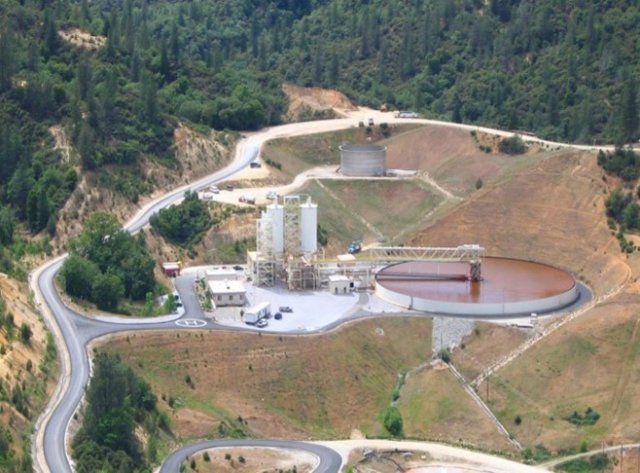
Multiple gravity-feed pipelines capture and convey AMD from the four sources to the downgradient AMD treatment plant, which handles an average of 400 million gallons of water each year. The treated water is discharged into Lower Spring Creek, a tributary of the Sacramento River. The treatment system byproduct, which is a metals-rich sludge, is routed to one of four drying beds. After drying, the sludge is hauled to an onsite landfill that was constructed by building a containment dam within an inactive open pit mine. The collection and treatment system addresses 97 percent of the metal load in surface water flowing from the site.
Vulnerability to Climate Change Impacts
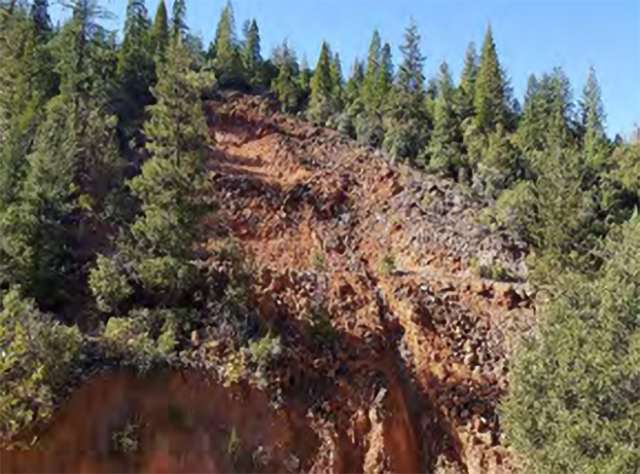
The site is vulnerable to intense storms potentially resulting in uncontrolled releases of AMD into the Sacramento River or its tributaries and stormwater-related soil erosion and landslides. Operation of the AMD treatment system is particularly sensitive to local precipitation frequency, duration and intensity. For example, several winter storms in 2016 generated discharges requiring operation of the collection and treatment system at maximum capacity over an extended time. The resulting acceleration of sludge generation and deposition in two drying beds prompted unanticipated sludge hauling to the disposal pit during winter, associated road maintenance and early rebuilding of the drying beds’ sand bases. The storms also caused slight ground movement at the area known as the Boulder Creek Landslide, which resulted in damage to an underground pipeline conveying AMD through the area.
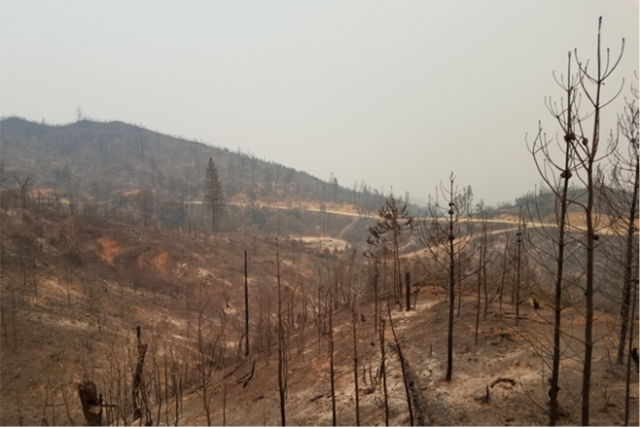
The site is additionally vulnerable to wildfires that could directly or indirectly damage components of the remedy. For example, the 2018 Carr Fire destroyed electricity poles, power lines, aboveground AMD conveyance pipelines and culverts and ignited a separate fire within one mine adit. The adit fire was extinguished quickly but damaged hundreds of feet of AMD pipeline as well as ventilation and electrical equipment.
Building Adaptive Capacity for Future Climate Scenarios
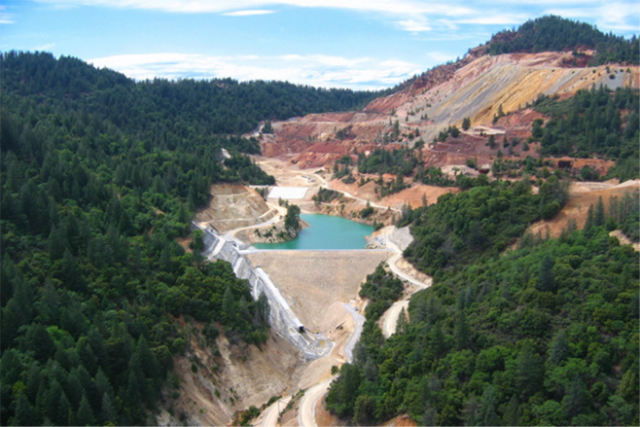
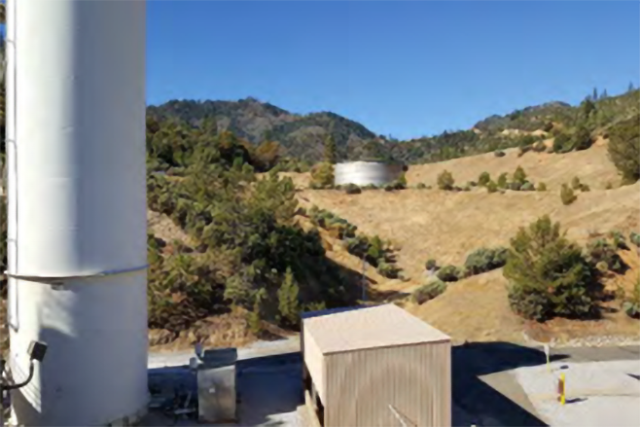
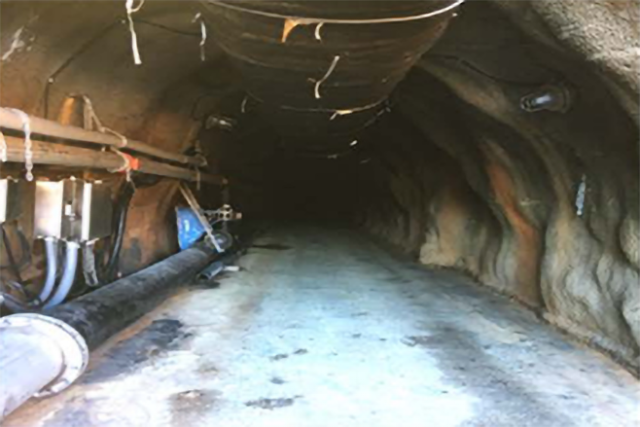
Certain measures incorporated into design and construction of the site’s interim remedies provided significant resilience during the Carr Fire. For example, the site’s existing redundancies and burial of piping in critical areas enabled uninterrupted collection of AMD. Continuous AMD collection also was aided by reliance on natural gravity rather than electricity- or fuel-powered pumps to convey the AMD. Additionally, the Slickrock Creek Retention Reservoir as well as an onsite one-million-gallon stainless steel tank allowed for continued AMD storage during the 10-day period in which the fire was most active and grid power for AMD treatment was unavailable.
After the Carr Fire, damaged high-density polyethylene (HDPE) pipes in key portions of the aboveground AMD pipeline were replaced with fire-resistant stainless steel pipes. Use of fire-resistant materials, particularly around the mine portals, helps prevent future fire conveyance to locations where HDPE pipes remain.
Upgrades or repairs to remedy components also were made after the 2016 storms, to increase resilience to future rainfall and snowmelt events. For example, a portion of the underground AMD pipeline damaged by stormwater-related landslide movement was repaired and retrofitted. The retrofit involved installing a joint in the existing HDPE pipe, which allows the pipeline to expand and constrict during periods of future landslide movement.
Other climate adaptation measures implemented over time have addressed infrastructure components such as site-wide stormwater control structures. After the Carr Fire, let-down channels descending influential side slopes were lined with riprap, grout bags or gabions to assure that water collecting on the site’s topographic benches is efficiently directed to downgradient locations, thereby reducing erosion and landslide potential. The protected channels are particularly vital in areas with vegetation suffering wildlife damage and now subject to more precipitation and temperature extremes.
In addition, selected pipes used for stormwater transport were replaced with pipes made of fire-resistant materials. The upgraded pipes prevent conveyance of fire through culverts and across roads and allow onsite roads to serve as potential fire breaks during future wildfires.
Increased collaboration with local and state firefighting agencies since a 2008 wildfire led to annual site inspections that provide opportunities for firefighters to recommend strategies for fire-hardening the site. Recent inspections yielded recommendations to increase the site’s capability to store clean water for emergency use and to establish and maintain adequate defensible space around critical infrastructure. In addition, EPA updated the site’s contingency plan to better reflect the needs of first responders and EPA personnel navigating a future wildfire or extreme weather event.
In 2020, EPA updated the site’s surface water quality model to reflect potential precipitation patterns associated with the region's changing climate. The updated model provides a better understanding of heavy metal concentrations at the site’s designated (interim) point of compliance, which are influenced by waters naturally exiting the site as well as onsite waters managed by the U.S. Bureau of Reclamation. The updated model also aids identification of the types of severe weather events likely to cause future water quality exceedances at the point of compliance.
Superfund Climate Resilience
EPA provides additional information about approaches for building climate resilience at Superfund sites.
Overview of Climate Adaptation Measures
EPA has implemented multiple measures over time to address vulnerabilities associated with precipitation extremes, wildfires and potential erosion or landslides:
- Installed a large fire-resistant aboveground tank for emergency storage of collected AMD.
- Installed a redundant network of buried pipelines to convey AMD in areas vulnerable to precipitation-related erosion and wildfires.
- Retrofitted underground AMD pipelines in areas found to be prone to landslides.
- Used nonflammable stainless steel to reconstruct aboveground portions of AMD pipeline segments found to be vulnerable to wildfires.
- Lined let-down channels on selected side slopes with protective materials such as gabions to prevent erosion or landslides in areas with vegetation damaged by wildfires or extreme weather conditions.
- Updated the site’s surface water quality model to better understand and address the site’s impacts on downstream surface waters, including the potential for uncontrolled release of AMD due to worst-case storm scenarios.
- Using the site’s natural land gradients rather than electricity- or fuel-fired pumps to assure continuous AMD collection and transfer during extreme weather events or wildfires and minimize use of equipment vulnerable to such conditions.
- Reassessing the site’s vulnerability to wildfires on an annual basis and implementing additional resilience measures as recommended by firefighting agencies.
Key Tools for Incorporating Climate Protections
Selection of a final remedy will account for future climate scenarios through use of the:
- Climate Vulnerability Assessment: Iron Mountain Mine, EPA Office of Superfund Remediation and Technology Innovation, May 2022
- Technical Memorandum: Water Quality Model Version 5, Iron Mountain Mine, Jacobs Engineering Group Inc., April 2020
- California’s Fourth Climate Change Assessment: Sacramento Valley Region Report, Benjamin Houlton and Jay Lund, University of California-Davis, August 2018
Point of Contact
- Lily Tavassoli, EPA Region 9
References
- Sixth Five-Year Review Report: Iron Mountain Mine Superfund Site, 2018, EPA Region 9.
August 2022
